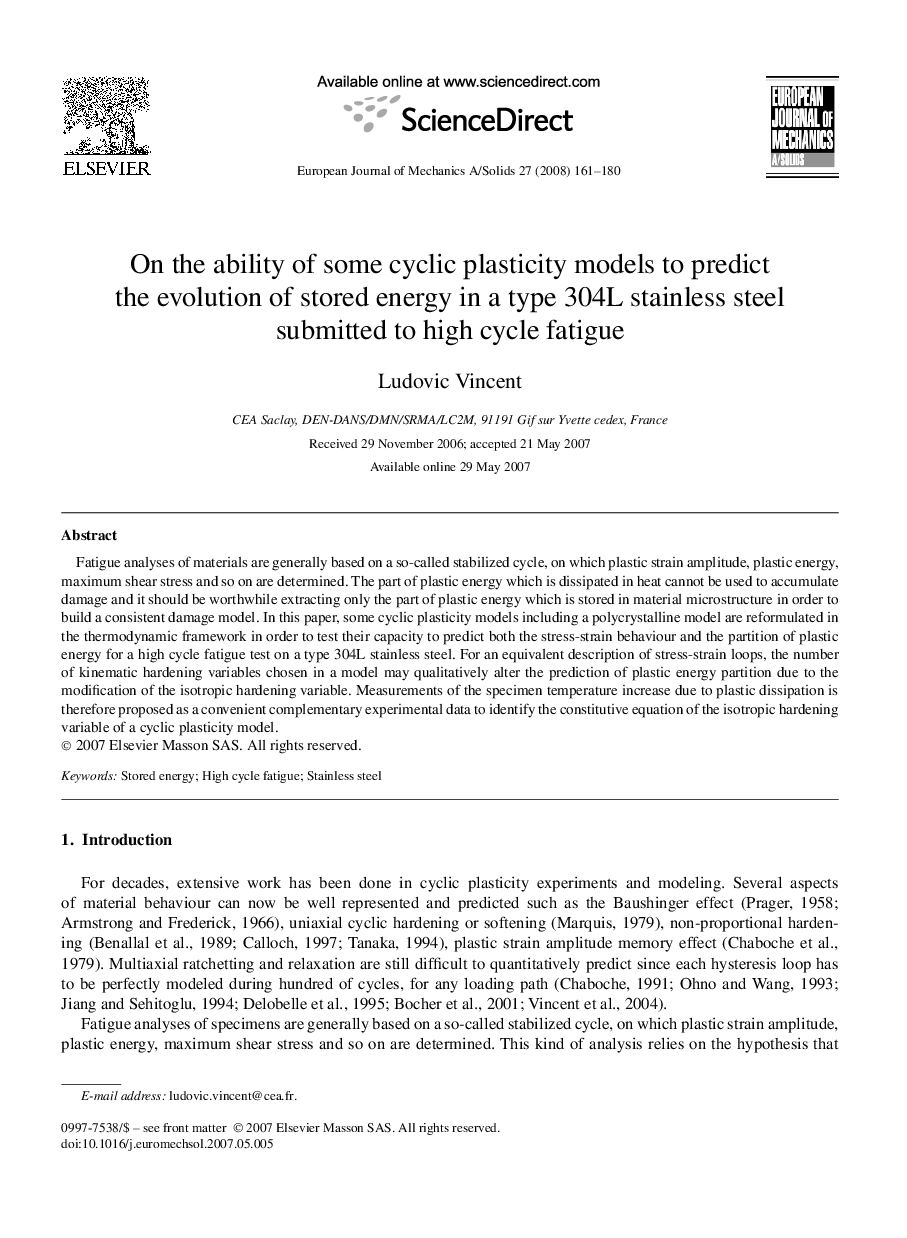| کد مقاله | کد نشریه | سال انتشار | مقاله انگلیسی | نسخه تمام متن |
|---|---|---|---|---|
| 775265 | 1463239 | 2008 | 20 صفحه PDF | دانلود رایگان |

Fatigue analyses of materials are generally based on a so-called stabilized cycle, on which plastic strain amplitude, plastic energy, maximum shear stress and so on are determined. The part of plastic energy which is dissipated in heat cannot be used to accumulate damage and it should be worthwhile extracting only the part of plastic energy which is stored in material microstructure in order to build a consistent damage model. In this paper, some cyclic plasticity models including a polycrystalline model are reformulated in the thermodynamic framework in order to test their capacity to predict both the stress-strain behaviour and the partition of plastic energy for a high cycle fatigue test on a type 304L stainless steel. For an equivalent description of stress-strain loops, the number of kinematic hardening variables chosen in a model may qualitatively alter the prediction of plastic energy partition due to the modification of the isotropic hardening variable. Measurements of the specimen temperature increase due to plastic dissipation is therefore proposed as a convenient complementary experimental data to identify the constitutive equation of the isotropic hardening variable of a cyclic plasticity model.
Journal: European Journal of Mechanics - A/Solids - Volume 27, Issue 2, March–April 2008, Pages 161-180